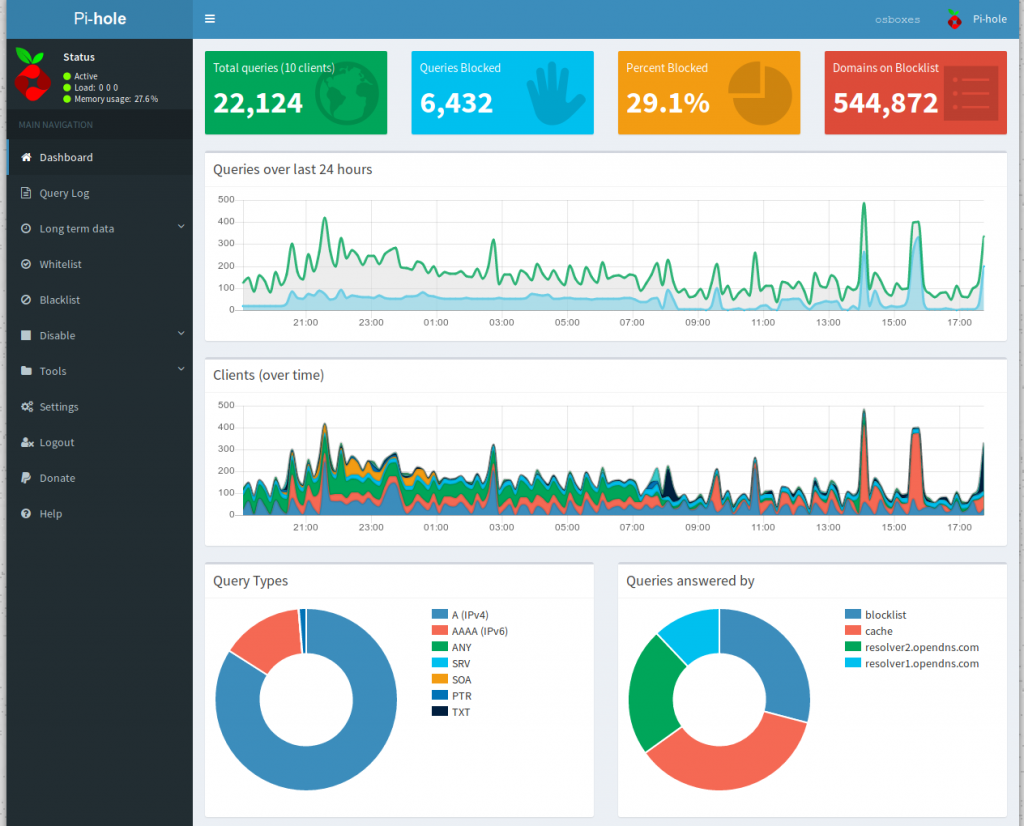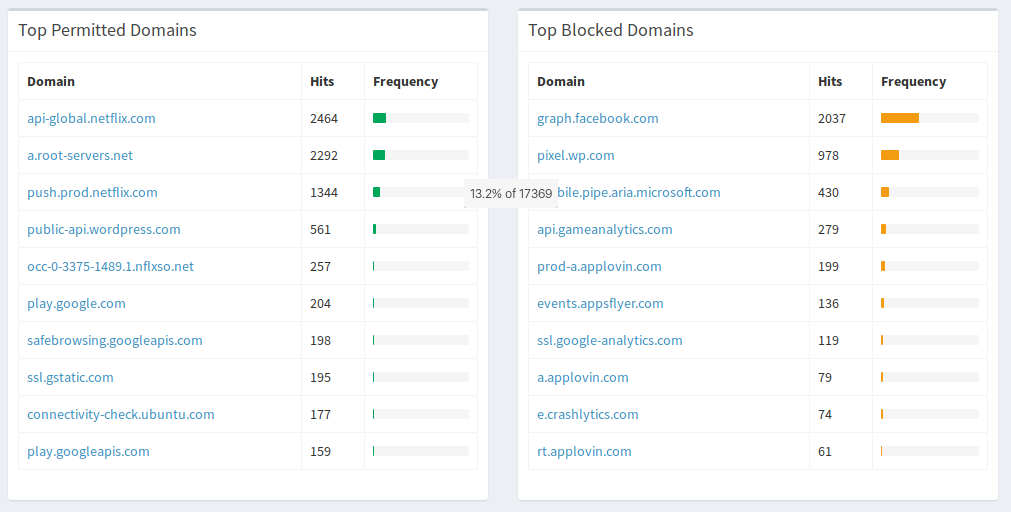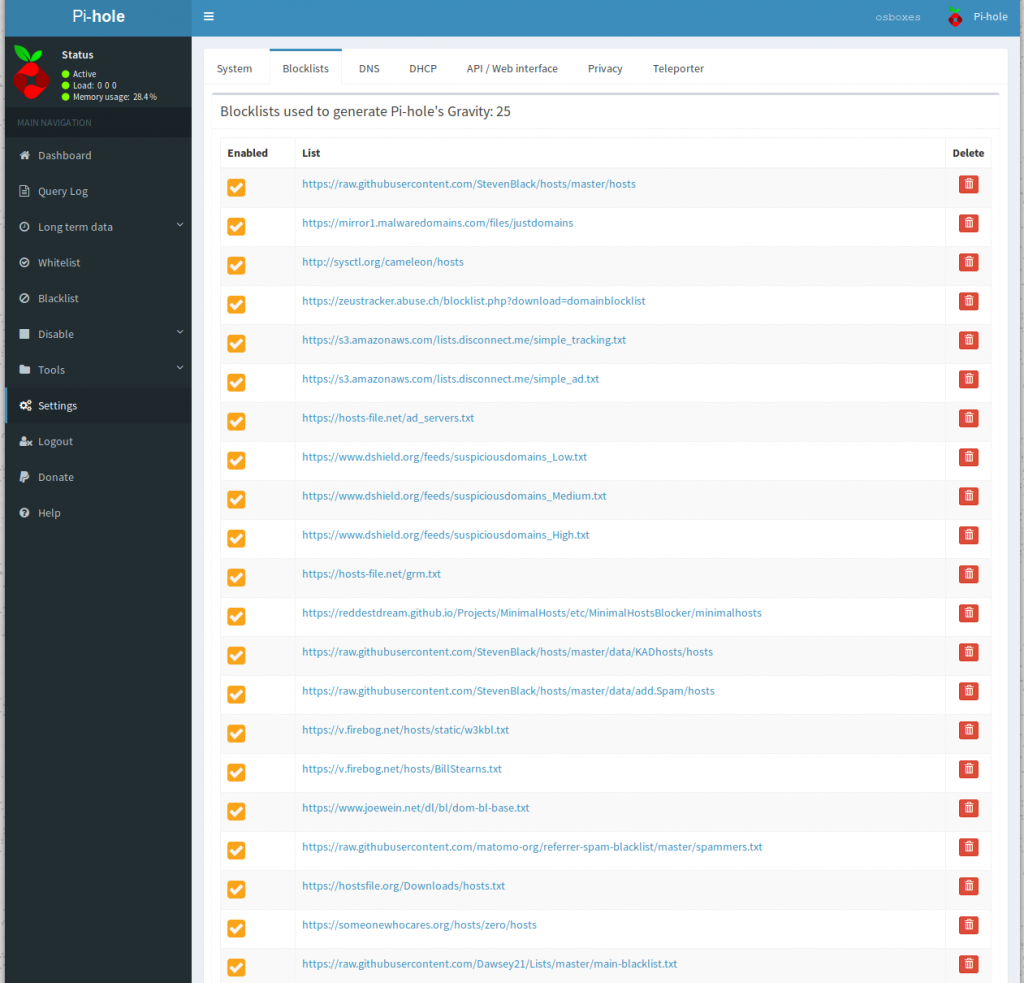You are missing something cool if you don’t know about Pi hole. I hope I can show you some benefits in this Pi Hole tutorial and expect to get you rolling in minutes. Pi Hole is a network-wide ad blocker. In a typical home environment, Pi hole can increase security and cut out almost all ads to all devices in your home, including Android and iPhone telephones, Android and Apple TV’s, computers regardless of the OS – all without having to install an adblocker on every single device. Some devices do not even have an option of installing adblocker.
What about security? If you have kids, then you are aware of online threats. I am pretty sure that all parents are aware of potential problems when kids are online unattended. The funny thing is that parents often think that the only way their kids get exposed to porn or viruses is when they sit behind a computer and entering „the phrases“ into the google search engine. They may think that by only playing games on the phone or a tablet is safe. But boy is this parent wrong.
Free games on Android are using shady ad partners. If you find the time to check notification area in your Android phone, you will find ads about Wife from Russia looking very „sexy,“ Great online Casinos, Free iPhone, Notifications that your phone is infected with a virus, super pills that will make you slim in a month without moving a finger.
By clicking such Ads, you can see nude pictures or even get infected with a virus. If your phone is infected, you should know that the hacker can use a camera on your phone and can record audio and video.
In this Pi Hole introduction, I will try to cover the benefits of using PiHole. I will show you how easy it is to install and configure basic settings. I will also share some necessary maintenance steps and tips. As said before, Pi-Hole is a network-wide ad blocking and DNS security app. It will set up a DNS Server, and it will prevent lousy DNS requests from affecting your network. In simple terms, a DNS server is an internet address registry. It helps locate the server you are looking for by using the domain name. When you visit a website, a query is made to the DNS server to find the IP Address of the server. Pi-Hole puts itself between your device and the DNS Server and blocks out requests to known ad servers and malicious websites. All it takes is a little bit of tweaking, and you can have a very secure internet experience.
Pi hole benefits
- It is Free! All you need is a computer, virtual server or unique device to run Pi-Hole on – Raspberry Pi. You can install Pi hole on a Linux system, or you can use Docker.
- Unlike browser-based add-ons, you don’t require client-side ad block software.
- Over 100,000 ad-serving domains blocked and counting. You can expand the list using freely available user-created lists.
- Blocks ads on literally any device. Including Smart TVs and other devices that do not allow to install ad blocking software or make any modifications.
- Pi hole Improves speed and overall network performance. It also reduces bandwidth as ads are not being loaded.
- It provides a pretty awesome dashboard where you can monitor various stats on ad and domains blocking. Pi-Hole has a built-in web server that provides an easy to use Web UI for system administration.
Prevent tracking, and it is hiding ads
The controversial practices in online advertising are many in the heel. Various statistics show that a cumbersome part of online users uses browser add-ons that disable the display of advertisements and disable followers. But this is not possible on all devices. These include smart TVs, game consoles, and more often tables and telephones.
You can use the Pi-hole server as a native DNS server, which provides for translating web addresses into IP addresses of addresses. During this translation, it’s easy to get rid of annoying advertisements and several ways to track your surfing around the web. Pi-hole uses similar lists as plug-ins to control online ads and uses them to ensure that requests for online ads, tracking scripts and similar devices on networks cannot be downloaded.
Pi-hole can be installed as a service on Raspbian (or another Linux server) or as a container service. Another solution is beneficial if you are using Raspberry as a server to which you can add a service. If your Home Assistant runs on your network, which we described in the third article of this section, you can install Pi-hole as a supplement with one click. Similarly, LibreELEC is a media server.
The installation of Pi-hole is extremely friendly and can be done by beginners. We will install it on Raspbian. A linux distribution crafted specially for the Raspberry PI. I assume you have it installed but if you have a Raspberry PI laying around waiting to be used the Raspberian installation goes something like this, below is just a summary, but you can find a detailed guide on the official Raspberry PI website.
- Go the downloads webpage.
- Download the image.
- Decompress the image
- Use Etcher or similar to write the image to the SD card
- Insert SD card in the Raspberry Pi
Once you have Raspberry PI is running Linux we can begin with the real deal.
Installation is started by running a short script that is waiting for us on the home page of the Pi-hole server. Make sure you run it as a super-user.
sudo -i
curl -sSL install.pi-hole.net | bash
The script will guide you through the installation, configuration, and installation of the missing component. During the installation, you can accept the default settings, only pay attention to the IP address setting.
When Pi-hole is installed, you start using it as a local DNS server. To do this, manually configure it as a DNS server on devices, or change the DHCP settings of your router. This will pass the appropriate settings to all connected devices. Depending on the settings you currently have set, the changes may be visible only in a few hours, or even days, depending on the router settings. For instructions, refer to the instructions for your type of DHCP device or service. You can add a backup DNS server that will take over if Pi-hole stops working or you will disconnect Raspberry Pi from the network.
When you open the Pi hole dashboard, you will be able to monitor the requests in real time.
Pi-hole is undoubtedly one of the best ways to use Raspberry Pi. The family and other users of the home network will be grateful for faster browsing and secure web browsing experience. Pi-hole has excellent documentation, a highly developed community, so you will not have any problems in the event of complications.
Regardless of how you have Pi-hole running, you will see a similar dashboard:

On the Dashboard, you will quickly see what is happening on your network. An excellent graph is showing query types and Queries answered by. Also, you can soon see Top Permitted Domains (domains that are used the most) and Top Blocked Domains (the most blocked domains)

Pi-hole comes with a set of block lists. Domains in the list are some of the most commonly used domains which authors of Pi-hole add by default. But you can quickly expand those lists and add additional lists created by users.

If somehow, the website you need is blocked, you can add it on the whitelist section. For example, you may like seeing Google Ads. But they get blocked. You can add Google Ads domains the white list, and they won’t get blocked. Likewise, you can use the blacklist section to block websites that are not blocked by default. For example, your kids spend too much time on Facebook. By adding Facebook domains to the blocklist, they won’t be able to spend time online and will instead learn mathematics.
But why I find most fascinating is a way to block websites with malware or similar content. The way computers get infected – in the companies, or the home is by successful phishing attacks. For example, a hacker will send an email to your email address. You are not aware of the threat and like something in the email, for instance, best price for XY product. You click on the link and are redirected to the infected website. There is a virus waiting to infect your computer. Depending on the internet your computer is part of the zombie network. It can be used to encrypt your data so that hacker can get some money from you. Or the computer can be used as part of the botnet attacking other networks.
When such websites are known, they get added to the lists and can protect users of those lists. That way, Pi-hole can be used in enterprises as well.
Conclusion
I like the simplicity of Pi-hole. It can protect home users and businesses of all types. Also if you don’t like ads, it can block all the ads and save some bandwidth. It is great that in addition to Raspberry PI it can be installed on docker or Linux you have prepared in your VMware or Hyper-V virtual environment.
If you find Pi hole easy to use and if you find value in the service, you can extend block lists on this address https://firebog.net/. Here you will find lists for malicious sites, additional advertising sites, and white lists as well. For example, if you want to enable Google ads, you will find just the right domains which you have to white list.


Napsat komentář